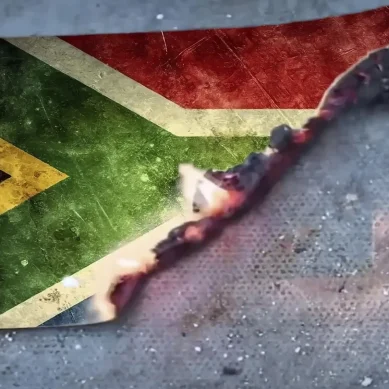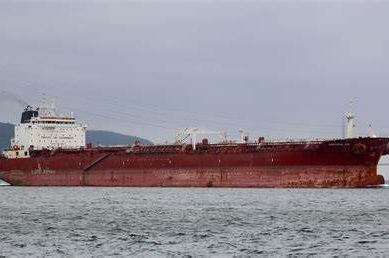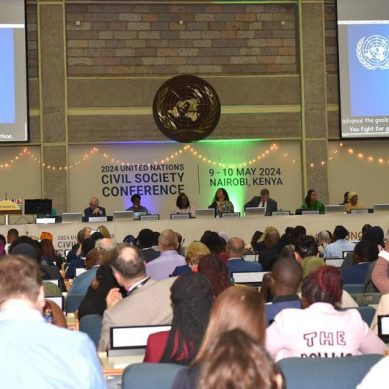
You can hardly turn on the TV news or go online these days without seeing… well, Donald Trump, of course, and his extreme version of American politics. Every indictment of him only seems to add to his strength in what’s no longer the Republican but the Trumpublican Party.
Still, speaking of extremism (and disasters), I wouldn’t put him at the top of the list. This summer has offered us a scorchingly extreme version of climate change and a planet being burned, flooded and melted in ever more unexpected and previously unimagined ways. Records are being set regularly with the year itself all too likely to take its place as the hottest ever – until, that is, next year on a planet where the last eight years have been the warmest in recorded history.
Oh, and if you happen to live on an island, here’s a little advice: get off it fast! Islands are going up in flames. Sardinia and Cyprus in the Mediterranean are now scorching messes and Hawaii’s Maui only recently became a first-class nightmare in which some residents had to plunge into the ocean to escape the flames. And if southern Europe, seemingly in an almost endless heatwave, continues to burn, northern Europe has been experiencing startlingly torrential rains and flooding.
Meanwhile, it’s not just Phoenix, Arizona, with those 31 straight days of 110 degrees Fahrenheit (or above), or even Chile, which recently passed 100 degrees Fahrenheit in what’s still known as… yes!… “winter” there. Temperatures have, in fact, been breaking records in an extreme fashion across the planet. It is, or should be, daunting, and yet, according to the latest polls, barely half of Americans (and only 23 per cent of Republicans) consider the climate emergency a major threat and the leadership of one of our two parties – you know just which one I mean – is still into climate denialism (or simply the promotion of fossil-fuel use) in a remarkable fashion.
Were they to win power again in 2024, you could, I suspect, essentially kiss this planet goodbye. Unfortunately, as TomDispatch regular Michael Klare suggests today, you just might be able to do that no matter what happens in our politics. Tom
In his 2005 bestseller Collapse: How Societies Choose to Fail or Succeed, geographer Jared Diamond focused on past civilisations that confronted severe climate shocks, either adapting and surviving or failing to adapt and disintegrating. Among those were the Puebloan culture of Chaco Canyon, New Mexico, the ancient Mayan civilisation of Mesoamerica, and the Viking settlers of Greenland. Such societies, having achieved great success, imploded when their governing elites failed to adopt new survival mechanisms to face radically changing climate conditions.
Bear in mind that, for their time and place, the societies Diamond studied supported large, sophisticated populations. Pueblo Bonito, a six-story structure in Chaco Canyon, contained up to 600 rooms, making it the largest building in North America until the first skyscrapers rose in New York some 800 years later. Mayan civilisation is believed to have supported a population of more than 10 million people at its peak between 250 and 900 A.D., while the Norse Greenlanders established a distinctively European society around 1000 A.D. in the middle of a frozen wasteland.
Still, in the end, each collapsed utterly and their inhabitants either died of starvation, slaughtered each other, or migrated elsewhere, leaving nothing but ruins behind.
The question today is: Will our own elites perform any better than the rulers of Chaco Canyon, the Mayan heartland and Viking Greenland?
As Diamond argues, each of those civilisations arose in a period of relatively benign climate conditions, when temperatures were moderate and food and water supplies adequate. In each case, however, the climate shifted wrenchingly, bringing persistent drought or, in Greenland’s case, much colder temperatures. Although no contemporary written records remain to tell us how the ruling elites responded, the archaeological evidence suggests that they persisted in their traditional ways until disintegration became unavoidable.
These historical examples of social disintegration spurred lively discussion among my students when, as a professor at Hampshire College, I regularly assigned Collapse as a required text. Even then, a decade ago, many of them suggested that we were beginning to face severe climate challenges akin to those encountered by earlier societies — and that our contemporary civilisation also risked collapse if we failed to take adequate measures to slow global warming and adapt to its inescapable consequences.
But in those discussions (which continued until I retired from teaching in 2018), our analyses seemed entirely theoretical: Yes, contemporary civilisation might collapse, but if so, not any time soon. Five years later, it’s increasingly difficult to support such a relatively optimistic outlook. Not only does the collapse of modern industrial civilisation appear ever more likely, but the process already seems underway.
When do we know that a civilisation is on the verge of collapse? In his now almost 20-year-old classic, Diamond identified three key indicators or precursors of imminent dissolution: a persistent pattern of environmental change for the worse like long-lasting droughts; signs that existing modes of agriculture or industrial production were aggravating the crisis; and an elite failure to abandon harmful practices and adopt new means of production. At some point, a critical threshold is crossed and collapse invariably follows.
Today, it’s hard to avoid indications that all three of those thresholds are being crossed.
To begin with, on a planetary basis, the environmental impacts of climate change are now unavoidable and worsening by the year. To take just one among innumerable global examples, the drought afflicting the American West has now persisted for more than two decades, leading scientists to label it a “megadrought” exceeding all recorded regional dry spells in breadth and severity. As of August 2021, 99 per cent of the United States west of the Rockies was in drought, something for which there is no modern precedent. The recent record heat waves in the region have only emphasised this grim reality.
The American West’s megadrought has been accompanied by another indicator of abiding environmental change: the steady decline in the volume of the Colorado River, the region’s most important source of water. The Colorado River Basin supplies drinking water to more than 40 million people in the United States and, according to economists at the University of Arizona, it’s crucial to $1.4 trillion of the US economy.
All of that is now at severe risk due to increased temperatures and diminished precipitation. The volume of the Colorado is almost 20 per cent below what it was when this century began and, as global temperatures continue to rise, that decline is likely to worsen.
The most recent report of the Intergovernmental Panel on Climate Change offers many examples of such negative climate alterations globally (as do the latest headlines). It’s obvious, in fact, that climate change is permanently altering our environment in an ever more disastrous fashion.
It’s also evident that Diamond’s second precursor to collapse, the refusal to alter agricultural and industrial methods of production which only aggravate or – in the case of fossil-fuel consumption – simply cause the crisis, is growing ever more obvious. At the top of any list would be a continuing reliance on oil, coal and natural gas, the leading sources of the greenhouse gases (GHGs) now overheating our atmosphere and oceans.
Despite all the scientific evidence linking fossil-fuel combustion to global warming and the promises of governing elites to reduce the consumption of those fuels – for example, under the Paris Climate Agreement of 2015 – their use continues to grow.
According to a 2022 report produced by the International Energy Agency (IEA), global oil consumption, given current government policies, will rise from 94 million barrels per day in 2021 to an estimated 102 million barrels by 2030 and then remain at or near that level until 2050. Coal consumption, although expected to decline after 2030, is still rising in some areas of the world. The demand for natural gas (only recently found to be dirtier than previously imagined) is projected to exceed 2020 levels in 2050.
The same 2022 IEA report indicates that energy-related emissions of carbon dioxide – the leading component of greenhouse gases – will climb from 19.5 billion metric tonnes in 2020 to an estimated 21.6 billion tons in 2030 and remain at about that level until 2050. Emissions of methane, another leading GHG component, will continue to rise, thanks to the increased production of natural gas.
- A TomDispatch report / By Michael Klare











